Power chords are making a comeback in many music genres, not just rock.
They offer a raw and punchy sound that can add depth and dimension to your tracks.
Universally recognized for their simplicity and versatility, power chords can effortlessly elevate a song’s energy.
As well as provide a robost backbone that supports melodies and harmonies alike.
Even as a digital music producer, knowing power chords is pivotal.
Their ability to layer sounds, build tension, or offer a clean break is indispensable when trying to craft a track that resonates with listeners.
In today’s article, we’ll be breaking down:
- What is a power chord? ✓
- The anatomy of power chords ✓
- Their application in various music genres ✓
- The nuances of major & minor chords ✓
- The significance of root notes ✓
- How to enhance your beats with power chords ✓
- Common chord variations ✓
- Techniques for guitar players (guitar chords) ✓
- Tips & pitfalls for optimal performance ✓
- Much more ✓
By the end of this article, you’ll be equipped to implement power chords seamlessly in your tracks 一 enhancing your music’s depth and dynamism.
Whether you’re aiming to produce chart-topping tracks or create timeless pieces, you’ll be utilizing power chords like a seasoned professional.
Plus, you’ll be able to integrate them into your unique soundscapes with finesse.
So, let’s dive in…
Table of Contents
- What is a Power Chord? Breaking it Down
- Why Digital Producers Should Care About Power Chords
- The Anatomy of a Power Chord
- Diving Deeper: Variations and Common Power Chords
- Using Power Chords in Your Tracks Like a Boss
- Bonus: Playing Power Chords Right (For Guitar Players)
- What is a Power Chord? Final Thoughts
What is a Power Chord? Breaking it Down

When it comes to breaking down chords, power chords, or fifth chords as they’re occasionally called, stand out for their unique composition.
They’re not major or minor chords, as they rely on two primary notes (two-note chord):
- The root note
- The root note’s fifth
This distinct simplicity is what grants power chords their iconic and unmistakable sound, especially prominent in rock music.
Knowing this distinction is key to answering the question “what is a power chord?”
On the guitar, playing power chords feels almost intuitive.
Just two fingers and you’re unleashing a force of musical energy that’s hard to ignore or not be drawn to.
However, as we mentioned, power chords not limited to rock music.
Many songs from various music genres have felt the punch of power chords, and benefited from them in a major way.
The absence of the third note, which typically characterizes a chord as major or minor, lends power chords an intriguing quality of neutrality.
This makes them incredibly versatile 一 fitting into numerous musical contexts without imposing a strictly major or minor quality.
So, if you want to learn how to play power chords like a boss, your music is going to skyrocket.
Why Digital Producers Should Care About Power Chords
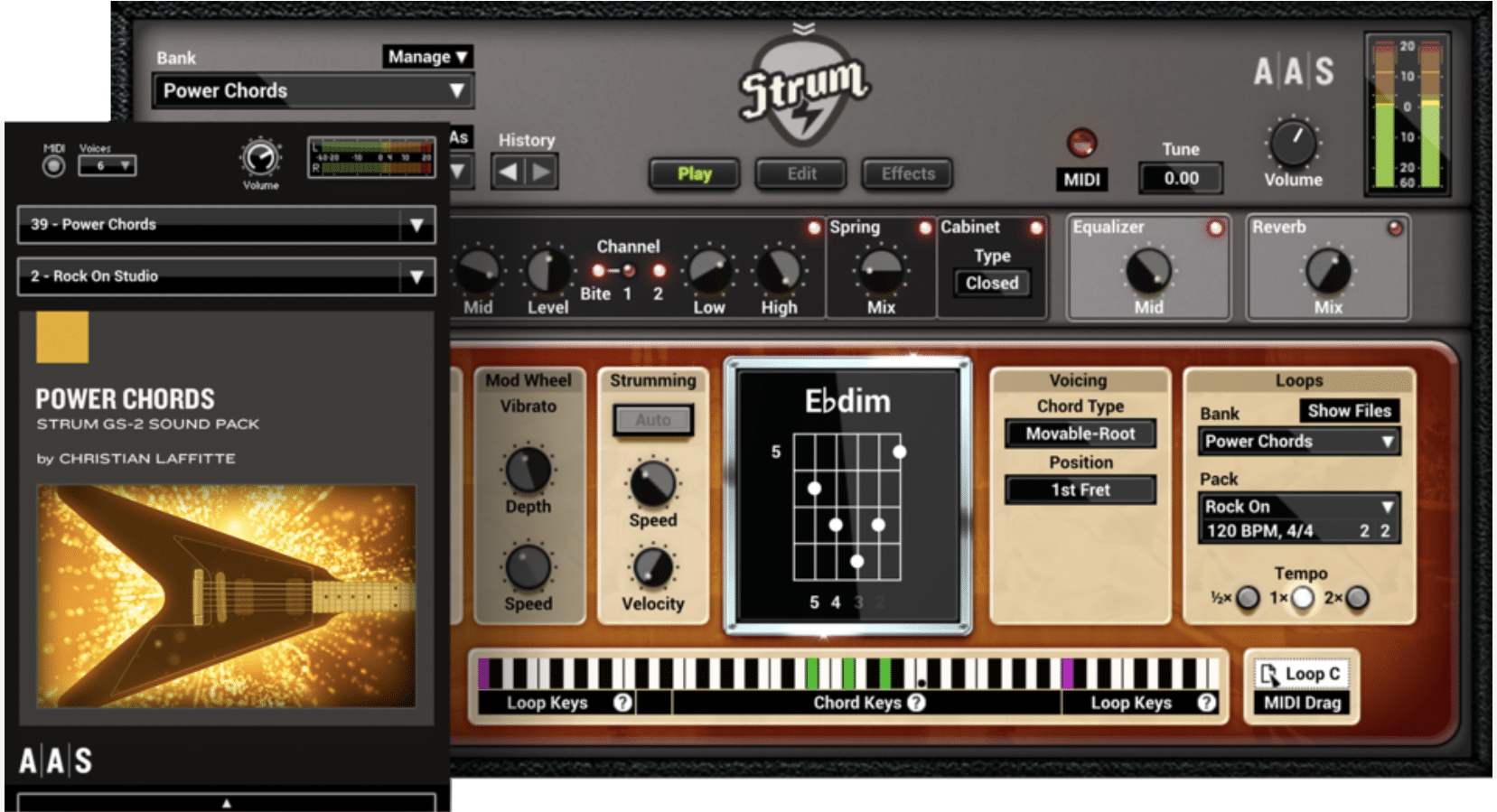
Hip-hop and trap beats predominantly lean on synthesizers, drum kits, and 808s, that’s a given.
However, the incorporation of guitar-based power chords can create a rich tapestry of sound that stands out and gets your tracks noticed.
By integrating the raw energy and depth of power chords, you can create tracks that:
- Resonate differently
- Include an unexpected yet compelling layer
- Impress anyone who hears your songs
Only power chords carry with them an essence of rebellion, rawness, and freedom that is unmatched in many ways.
When these chords are woven into hip-hop or trap beats, the result is a genre-blending masterpiece.
This fusion not only captures the ears of traditional hip-hop and trap enthusiasts but also attracts rock music aficionados (which expands your fanbase).
Artists like Juice WRLD, Post Malone, and Lil Peep have showcased how rock elements can seamlessly blend into trap 一 creating monumental hits in the process.
Sampling has been a cornerstone in hip-hop for decades.
By pulling from rock classics that leverage power chords, you can infuse your beats with nostalgia while simultaneously producing something fresh.
NOTE: This method doesn’t just pay homage to iconic tunes; it revitalizes them.
Think of the intrigue when listeners recognize a snippet from a 70s rock anthem, now transformed and re-contextualized within a modern trap beat.
While power chords might come off as simplistic, they have a knack for conveying and evoking profound emotions.
Their neutral quality means they can mold themselves to fit the track’s mood.
If a unique song aims to exude melancholy or introspection, a power chord progression can heighten that intriguing feeling.
Conversely, if the goal is to create an anthemic, head-banging trap hit, power chords can amplify that energy.
Essentially, they serve as an versatile tool, ready to shape-shift as needed.
The Anatomy of a Power Chord
In order to really grasp ‘what is a power chord?’ and its power (pun intended), let’s peel back the layers and explore the core of power chords.
-
Difference Between Major and Minor Chords
A chord’s essence lies in its unique notes.
Understanding those intricacies is vital if you’re looking to take your tracks to the next level.
The Major Chord
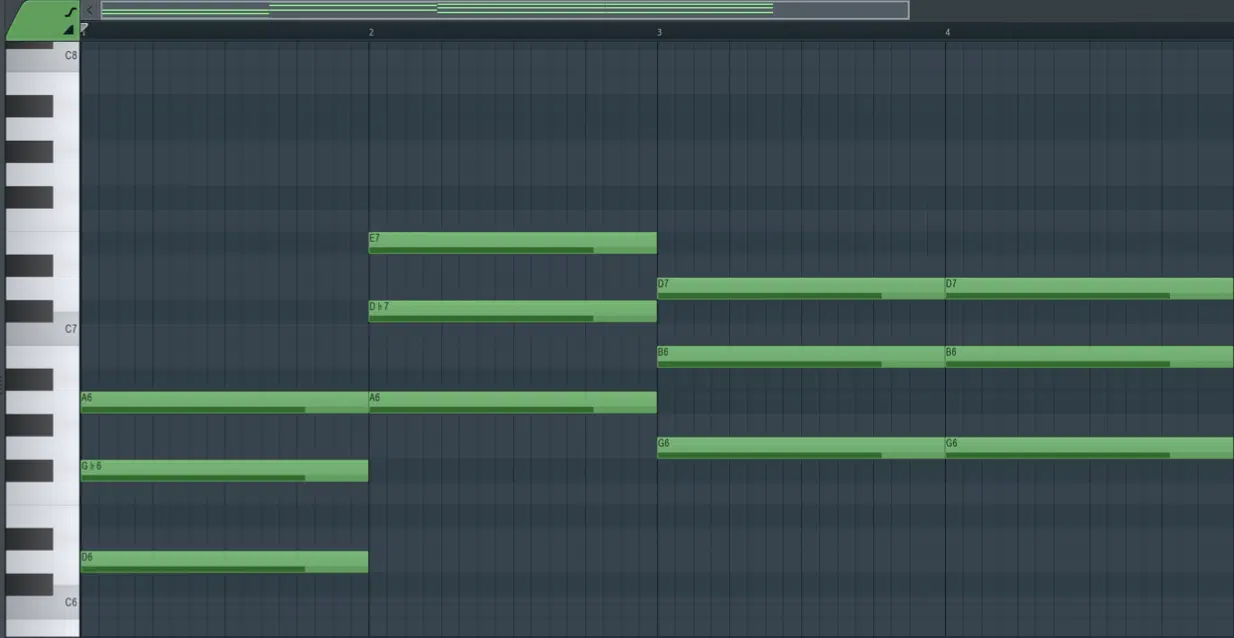
The Major chord, often associated with a sense of joy and resolution, comprises three notes:
- The root
- Third
- Fifth
If you’d like to know everything about major chords and the major scale, we’ve got you covered.
The Minor Chord
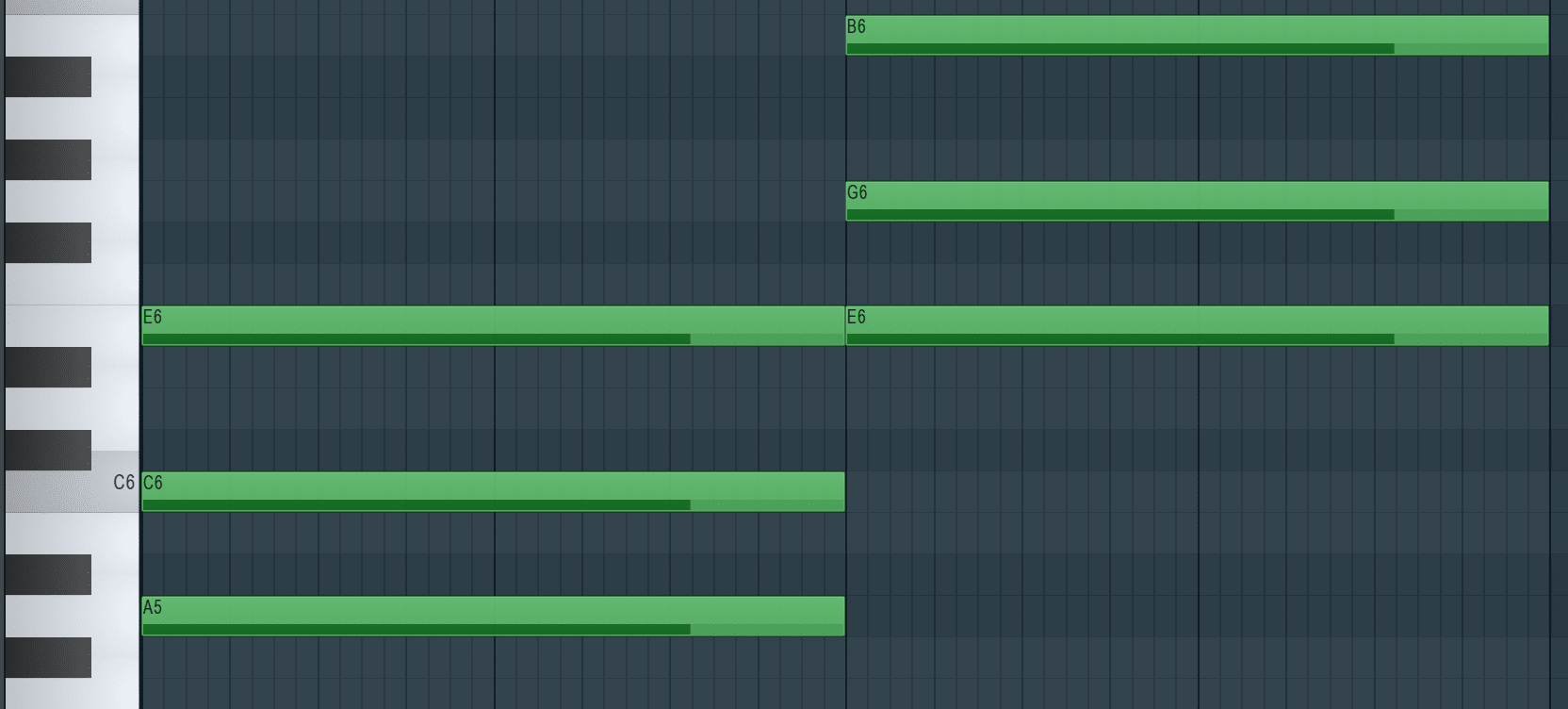
The minor chord, known for its somber and reflective tone, also consists of three notes:
- The root
- Flattened (lowered) third
- Fifth
The distinct third note in the major and minor chords gives them their major or minor quality.
If you’d like to know everything about minor chords and the minor scale, we’ve got you covered.
Power chords, however, sidestep this categorization 一 relying only on the root and the fifth, they avoid the third note altogether.
This absence eliminates the distinctly major or minor tonality, leading to the power chord’s unique sound.
In digital music production this neutrality can be extremely beneficial and opens up a world of creative possibilities.
For example, it allows for greater flexibility in layering and sampling.
When crafting a beat and seeking a guitar sound that doesn’t sway too happy or too sad, power chords come to the rescue.
For producers looking to expand their musical palette, understanding this distinction between a major chord, minor chord, and power chord can be invaluable.
It offers a broader array of tools to play with and ensures that the music remains fresh.
-
Root Note Importance
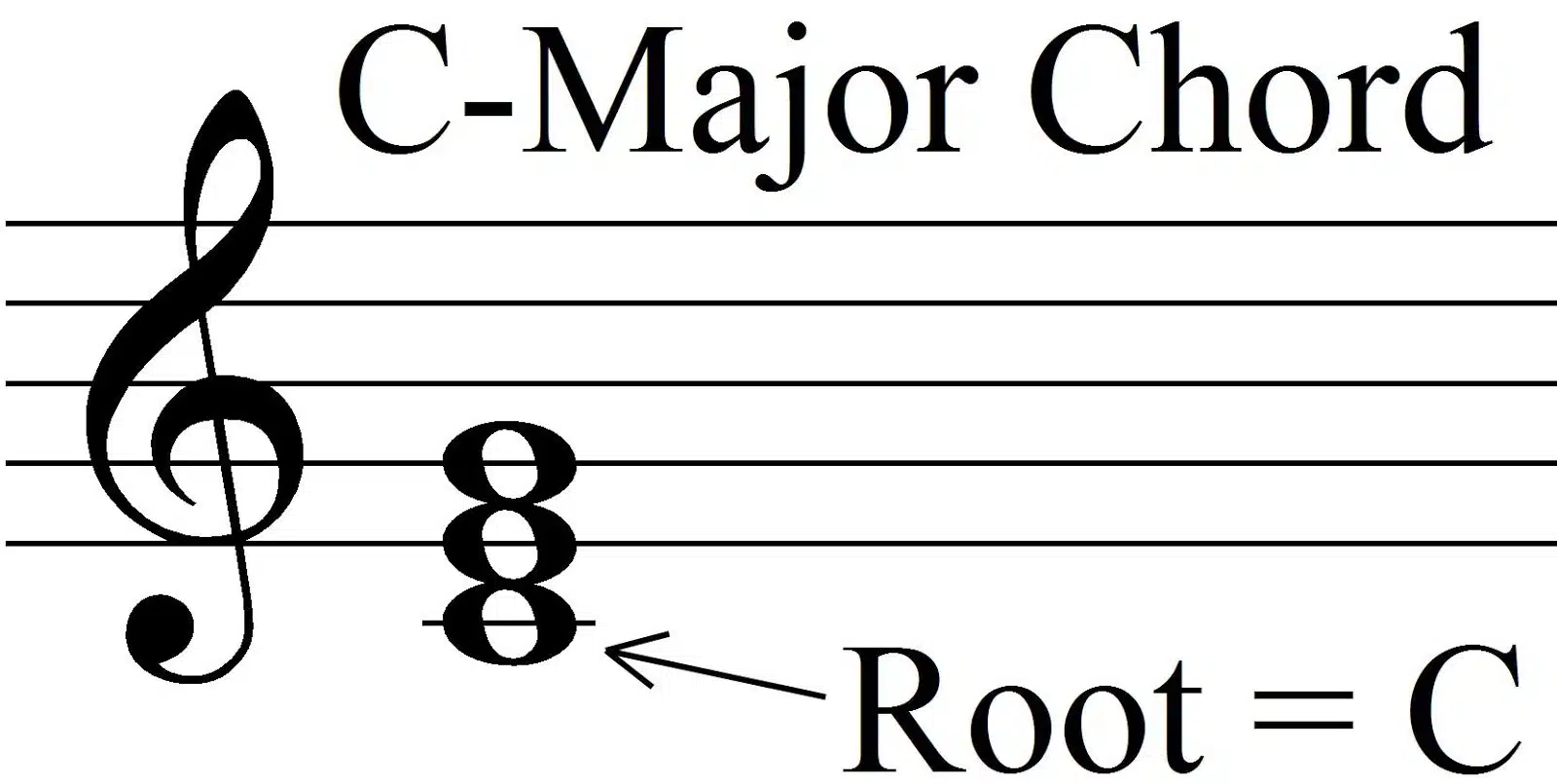
The root note, as the name suggests, is foundational 一 serving as the anchor or initial starting point.
Everything else orbits around this root note.
When playing power chords on a guitar, it’s typically played on the low E string, which provides depth to the chord’s sound.
The root note’s position determines the chord’s name.
For example, if you play a power chord starting on the third fret of the low E string, you’re playing a G power chord.
Move up to the fifth fret, and you’re now playing an A power chord.
For digital music producers, understanding the role of the root note is essential.
A root note defines the chord’s tonality and serves as a reference point for harmonization and layering in a track, which always captures people’s attention and respect.
-
Power Chord Shape
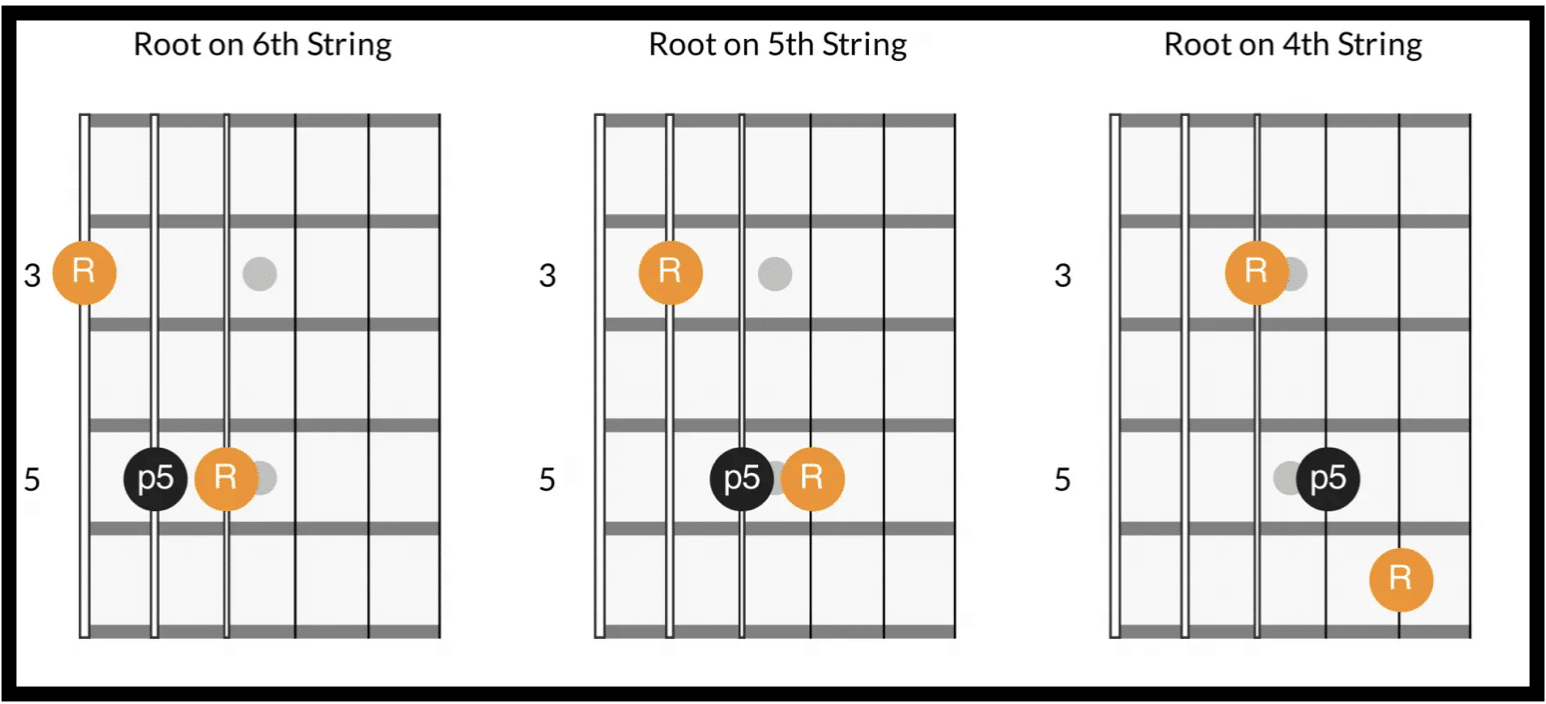
When we talk about power chord shapes on the guitar, it’s about the finger positioning and frets involved.
One of the joys of power chords is their movable shape.
Once you nail the basic power chord shape, it’s simply a matter of sliding up or down the fretboard to play other power chords.
The simplicity of the power chord shape often attracts beginners to start their guitar playing journey with power chords.
The power chord shape primarily involves:
- The index finger 一 Pressing down on the root note.
- The ring or pinky finger 一 Pressing down on the fifth.
For example, to play a D power chord shape, you’d press the fifth fret on the fifth string (A string) with your index finger and the seventh fret on the fourth string (D string) with your ring or pinky finger.
Incorporating this understanding into your tracks means knowing how these power chord shapes translate sonically.
When sampling or simulating guitar chords, recognizing a power chord shape can aid in achieving that authentic guitar sound.
Yes, even if you’re working entirely digitally knowing about the power chord shape is essential.
Diving Deeper: Variations and Common Power Chords
Delving into the world of power chords, you’ll discover variations that go beyond the basic structure.
Each variant introduces a new texture and sonic possibility.
So, whether they derive from the C Major scale or any other scale, let’s dive into some of these variations and why they matter.
-
D Power Chords
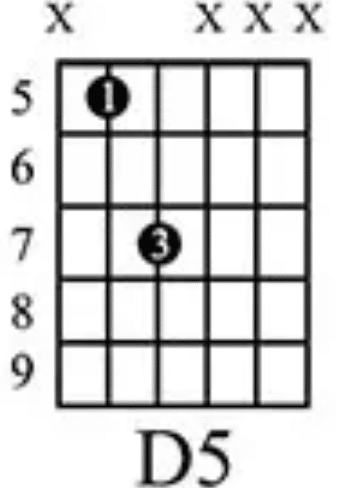
The D power chord, like other power chords, focuses on the root note and its fifth.
On the guitar, the D power chord is traditionally played using:
- The D note on the A string
- The A note on the D string
This gives a rich and resonant sound, which is why it’s a favorite among rock guitarists and the rock guitar realm.
Beyond its use in rock music, the D power chord has found its way into other genres 一 adding depth and intrigue to melodies.
Introducing a D power chord can be an excellent way to break a repetitive loop or add a unique flair to a beat.
However, one of the beauties of the D power chord is its versatility.
Whether strummed hard for an edgy sound or played softly for a subtle background tone, its adaptability is unparalleled.
This makes it an essential first chord for both traditional and digital musicians, especially when you’re first asking yourself “what is a power chord?”
-
C Power Chords
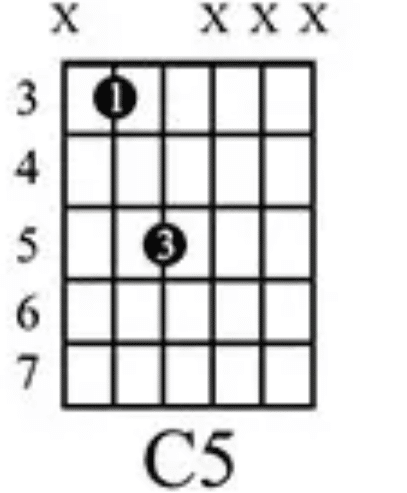
Much like the D power chord, the C power chord is formed by playing the root note (C Major) and its fifth, G.
On the guitar, the most common position is on the third fret of the A string.
The C power chord carries a slightly different tonality compared to its D counterpart, as its sound is a bit fuller and more rounded.
NOTE: For this reason, it often finds its place in mellower tracks or in songs where a deeper emotional touch is needed.
For digital producers, the C power chord can serve as a base for building more complex chords or harmonies.
This is especially true in genres hip-hop, where blending traditional instruments with digital sounds creates a unique soundscape.
Considering its broad applicability, mastering the C power chord can create numerous creative avenues.
From songwriting to beat-making and everything in between.
-
G Power Chords
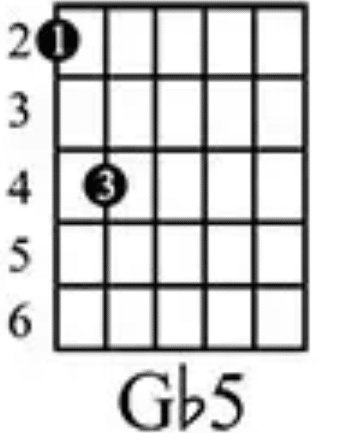
The G power chord stands out with its brighter and more open sound.
Played with the root note on the third fret of the low E string and its fifth, D, it offers a crispness that can uplift any tune.
Often, it’s the G power chord that’s used to bring a sense of resolution or climax.
In the realm of rock music, it’s the chord that can often be heard ringing out during the triumphant end of a track.
Regardless of genre, the G power chord can be manipulated to introduce an organic touch to any type of track.
With the right audio effects and modulation, it can even serve as the backbone of an entire song.
NOTE: The G power chord’s open sound can be an asset when layering sounds or creating a wide stereo image in a mix.
Its inherent brightness can cut through dense arrangements.
This makes it a valuable tool for professional producers and amateurs alike.
-
Open Chords vs Barre Chords

Power chords, as you now know, are played using just two or three strings, which differ from both barre chords and open chords.
So, let’s break it down.
- Barre chords 一 Use the index finger to press down multiple strings across the same fret, creating a fuller-sounding chord.
- Open chords 一 Allow certain open strings to be played open, creating a resonant and airy sound.
Incorporating these chords into digital music production offers a range of creative possibilities.
Barre chords can be used to create a full-bodied, wall-of-sound effect; especially useful for music styles like rock music or pop.
Open chords, with their ringing resonance, can add depth and space to a track.
Blending the sounds of barre and open chords can provide a refreshing break from the usual synthesized sounds.
By understanding and emulating the sonic characteristics of these chords, your tracks can be infused with a touch of the organic.
Plus, when these chords are paired with power chords in a chord progression, they offer a captivating dynamic range.
The mix of punchy power chords, full barre chords, and airy open chords can elevate a track from ordinary to extraordinary.
Using Power Chords in Your Tracks Like a Boss
Power chords, with their sheer force and simplicity, have carved a niche not just in rock music but have resonated across various genres.
Let’s explore their wider applications and how they continue to shape modern music.
-
Distortion’s Best Friend
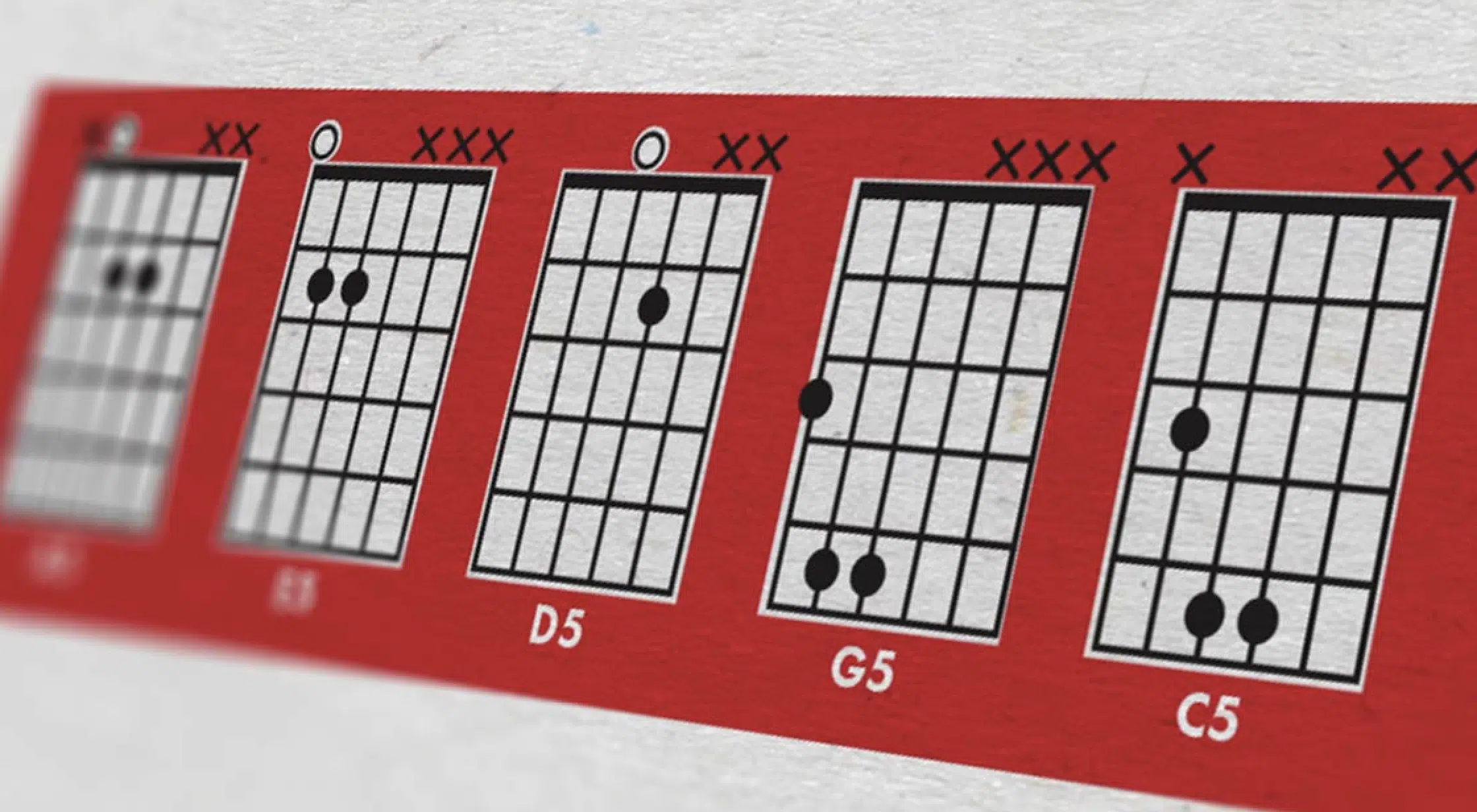
Distortion and power chords are like peanut butter and jelly; they just belong together.
Distortion amplifies the inherent energy of power chords and gives them a more aggressive, in-your-face edge.
In the realm of rock, this combination is the bread and butter.
Think of the iconic riffs of AC/DC or Nirvana 一 the grit and grind come from power chords played with distortion.
It’s a sound that screams rebellion and has become emblematic of rock’s spirit.
For digital producers, the use of distortion isn’t limited to guitars, as other elements can also benefit from distortion, such as:
When paired with power chords (whether sampled or synthesized) this effect can breathe life and energy into a track.
Therefore, setting it apart from the basic sounds that populate today’s music industry.
Understanding the unique nuances of distortion is also crucial.
Too much distortion, the track can becomes a complete mess; too little distortion, and the desired punch may be lost.
Balancing distortion is delicate; allowing for the creation of tracks that are both edgy and refined.
This way you can capture the attention of audiences that span across multiple genres.
NOTE: If you’d like to learn an industry secret distortion technique to make your tracks stand out, we got you covered.
-
Power Chord Progression Tips
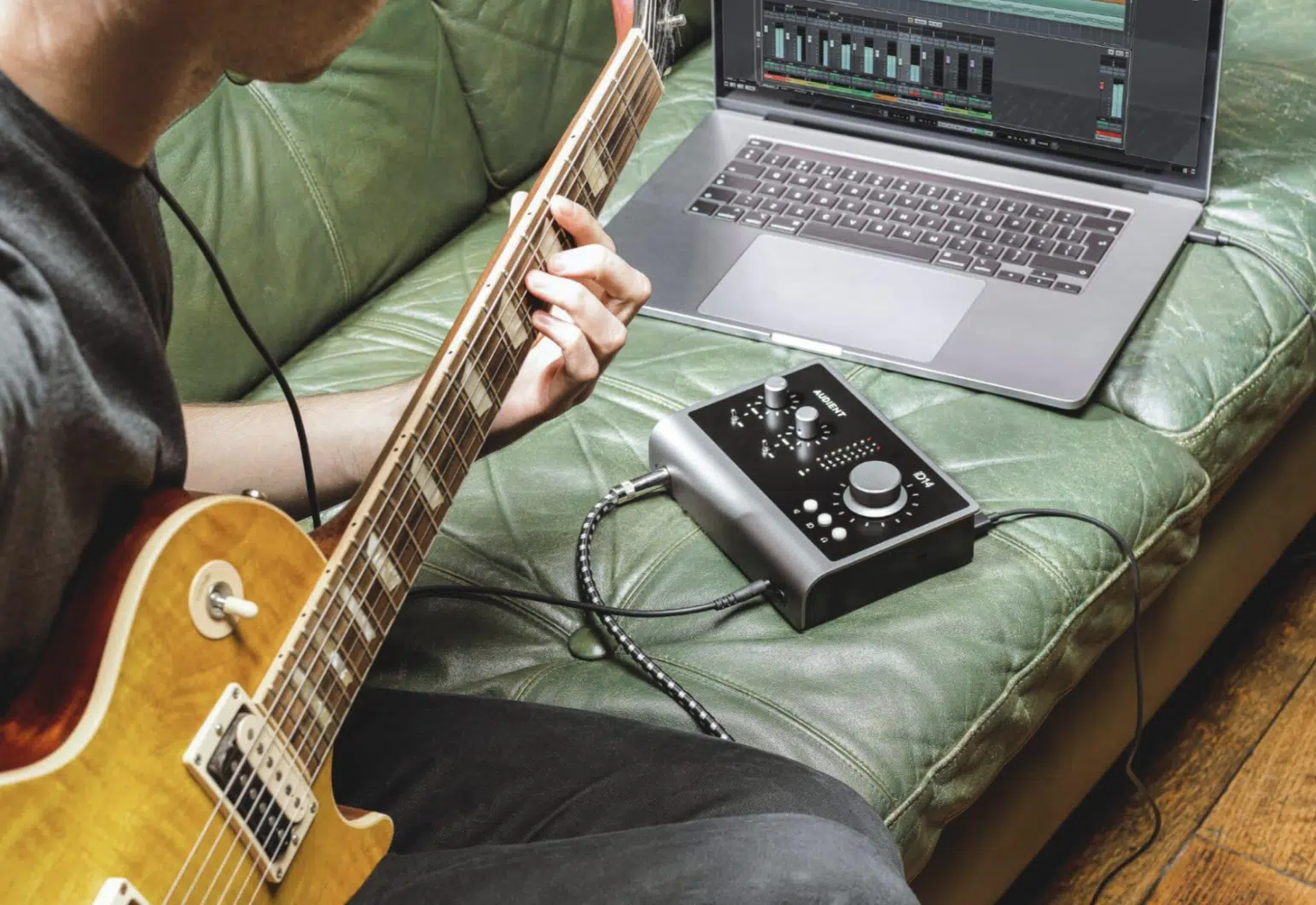
Crafting a memorable chord progression is an art, and with power chords, the canvas is vast.
Here are some tips to make the most of these versatile chords on your exciting chord progression journey:
#1. Keep it Simple
The strength of power chords (fifth chords) lies in their straightforwardness.
A catchy riff often employs just two or three power chords in a memorable sequence.
#2. Experiment with Dynamics
Playing with the intensity of strumming or the volume can add depth to a chord progression.
A softly played power chord can be just as impactful as a heavily distorted one, depending on the song’s context.
#3. Mix and Match
Don’t hesitate to blend power chords with open chords, barre chords, or other complex chord progressions.
This combination can create captivating chord progressions that keep listeners hooked.
#4. Understand the Mood
Power chords can be both uplifting and melancholic.
Recognizing the emotion you want to convey and choosing all the chords accordingly can make all the difference.
Bonus: Playing Power Chords Right (For Guitar Players)
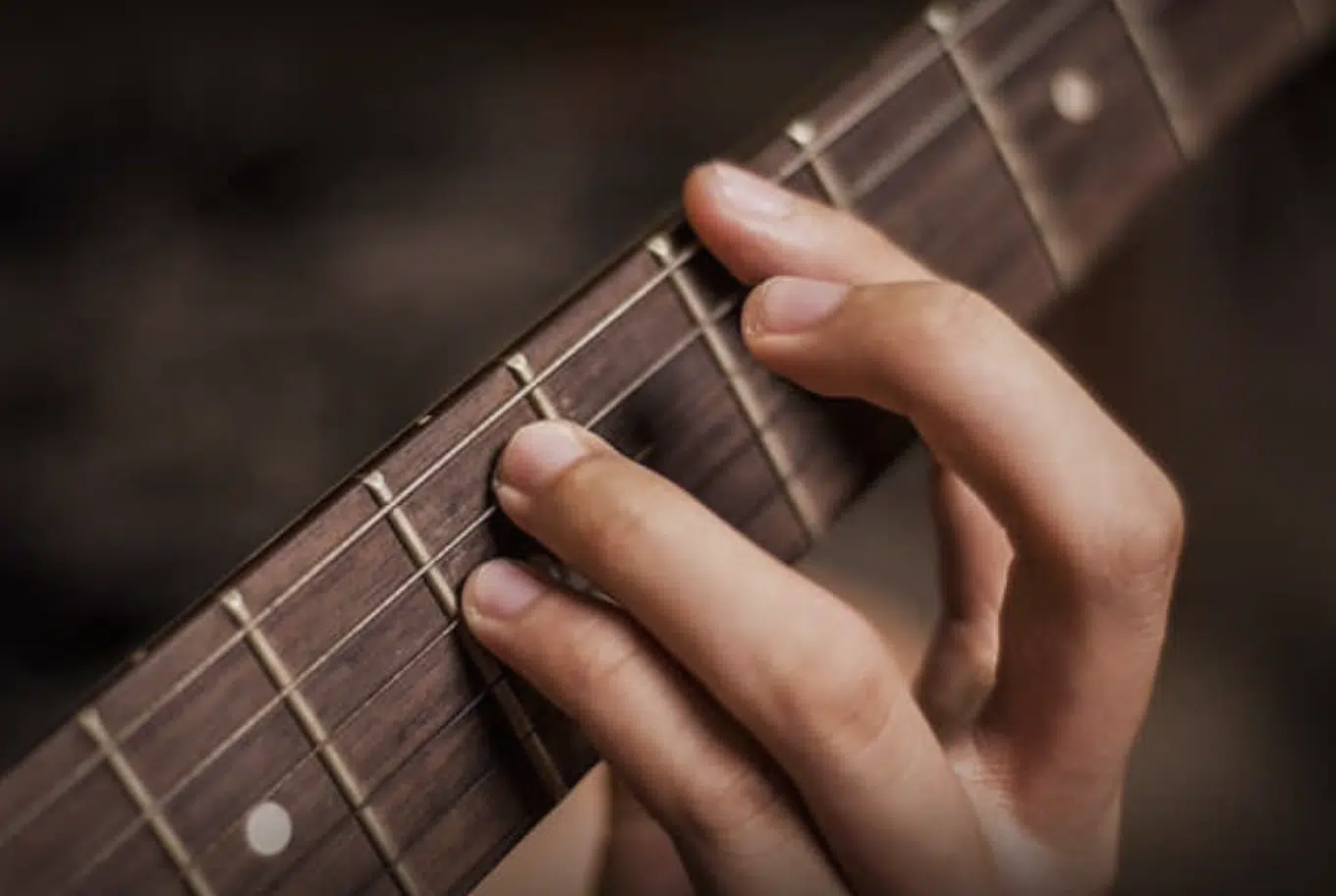
Playing a C5 Chord Correctly
Mastering power chords is essential, but doing them justice requires technique and understanding.
So, if you’re asking yourself “what is a power chord?” because you’re a live guitarist, this section is for you.
Proper Hand Position: Ensure your thumb is positioned at the middle-back of the guitar neck.
This provides the necessary leverage to press the strings firmly.
Clean Transitions: When moving from one power chord to another, ensure your fingers move as a unit.
This minimizes any lag between chords and ensures a smooth sound.
Muting Unwanted Strings: Especially when playing on an electric guitar, it’s crucial to mute strings that aren’t a part of the chord.
This can be successfully carried out using the palm or the underside of your fingers.
Experiment with Picking Patterns: While power chords are often strummed, picking individual strings can provide a different texture.
This technique is useful for creating variations in a song.
-
Common Pitfalls & Tips
There are some common mistakes when playing guitar that even seasoned players can make, especially true when first learning the answers to “what is a power chord?”
Here are a few of the most common issues and how to rectify them:
#1. Avoid Overstraining
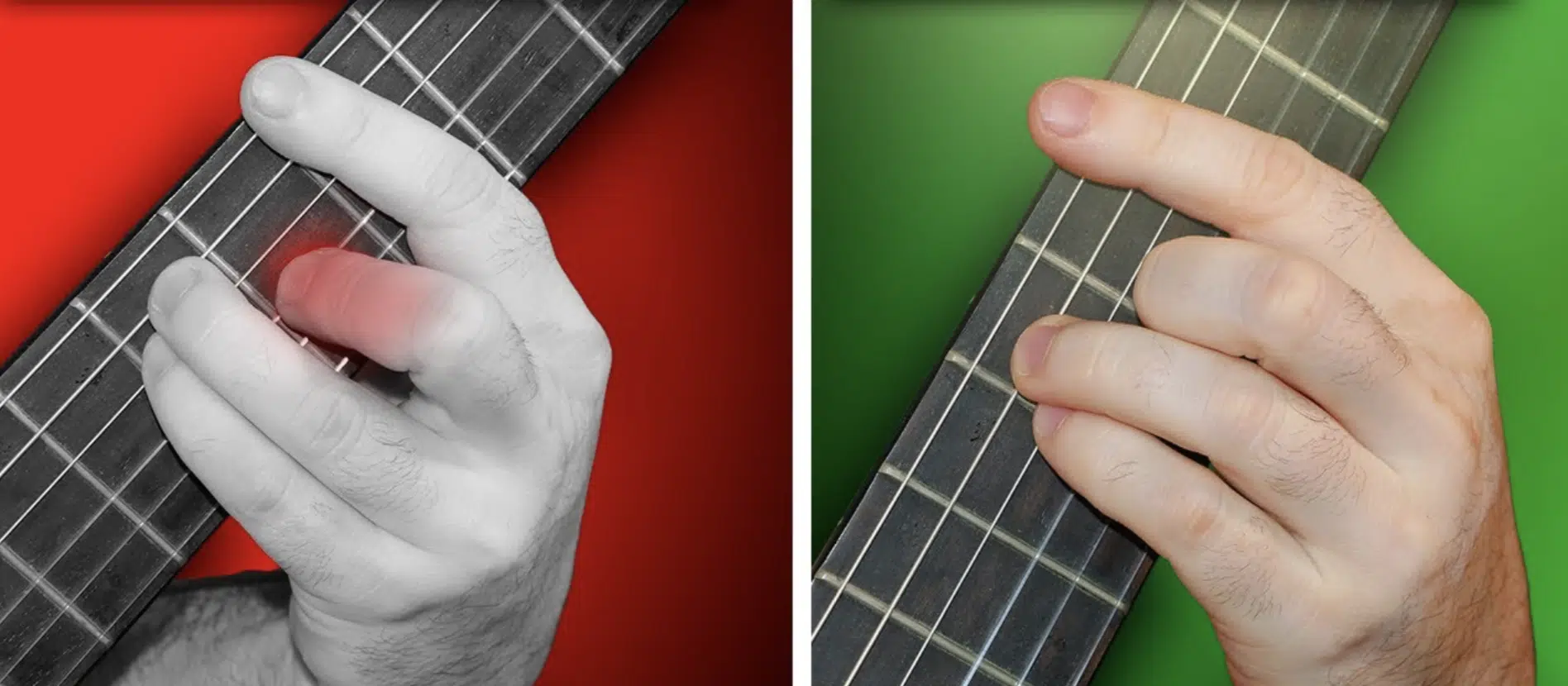
Especially for beginners, playing power chords can be physically demanding.
Regular breaks and hand exercises can prevent strain.
#2. Watch Out for Unintended Noise
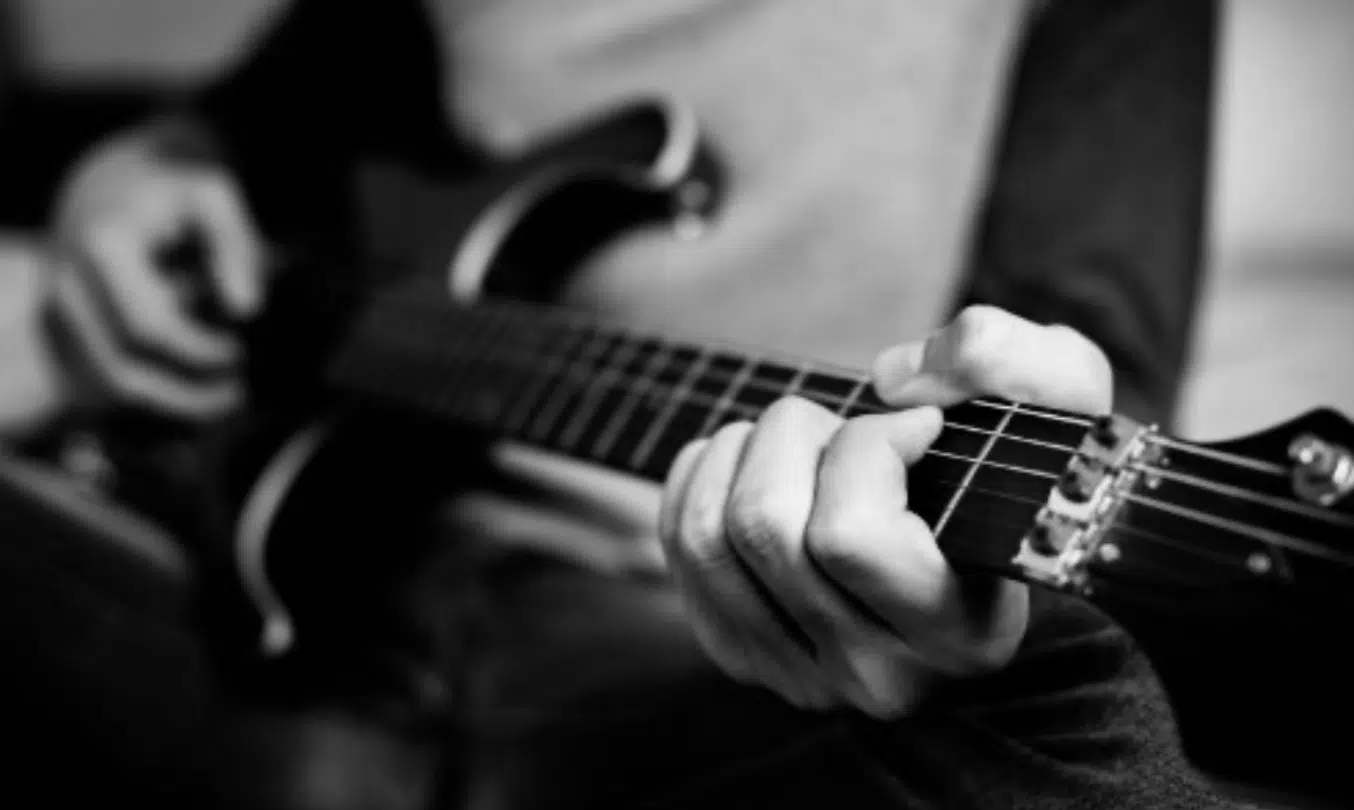
Ensure that only the desired strings are played.
Unwanted string noise (from all the strings) can muddy the overall sound.
#3. Maintain String Health
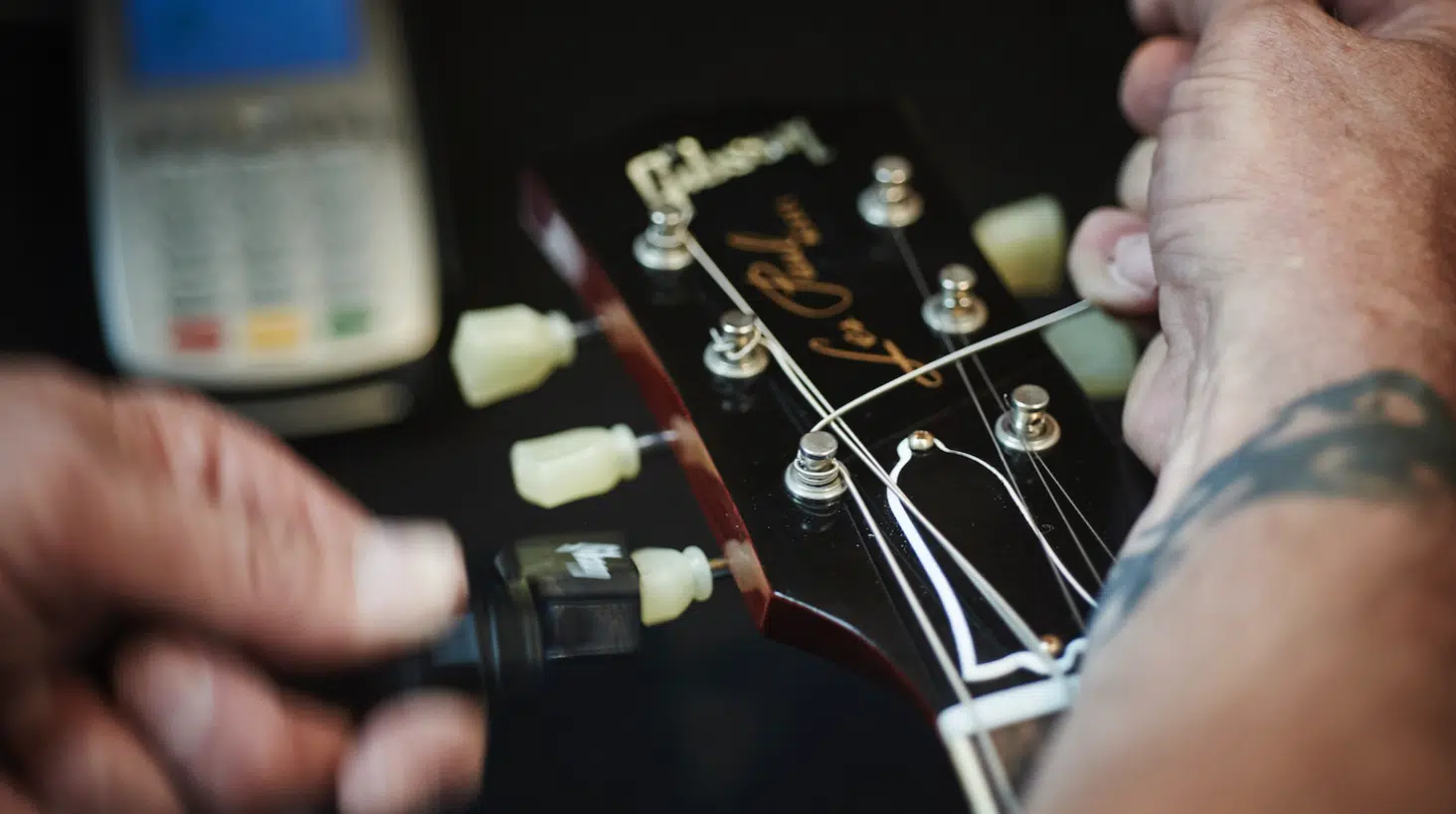
Worn-out strings can hamper the sound of power chords.
Regularly changing strings ensures the guitar chords resonate as intended.
#4. Stay in Tune
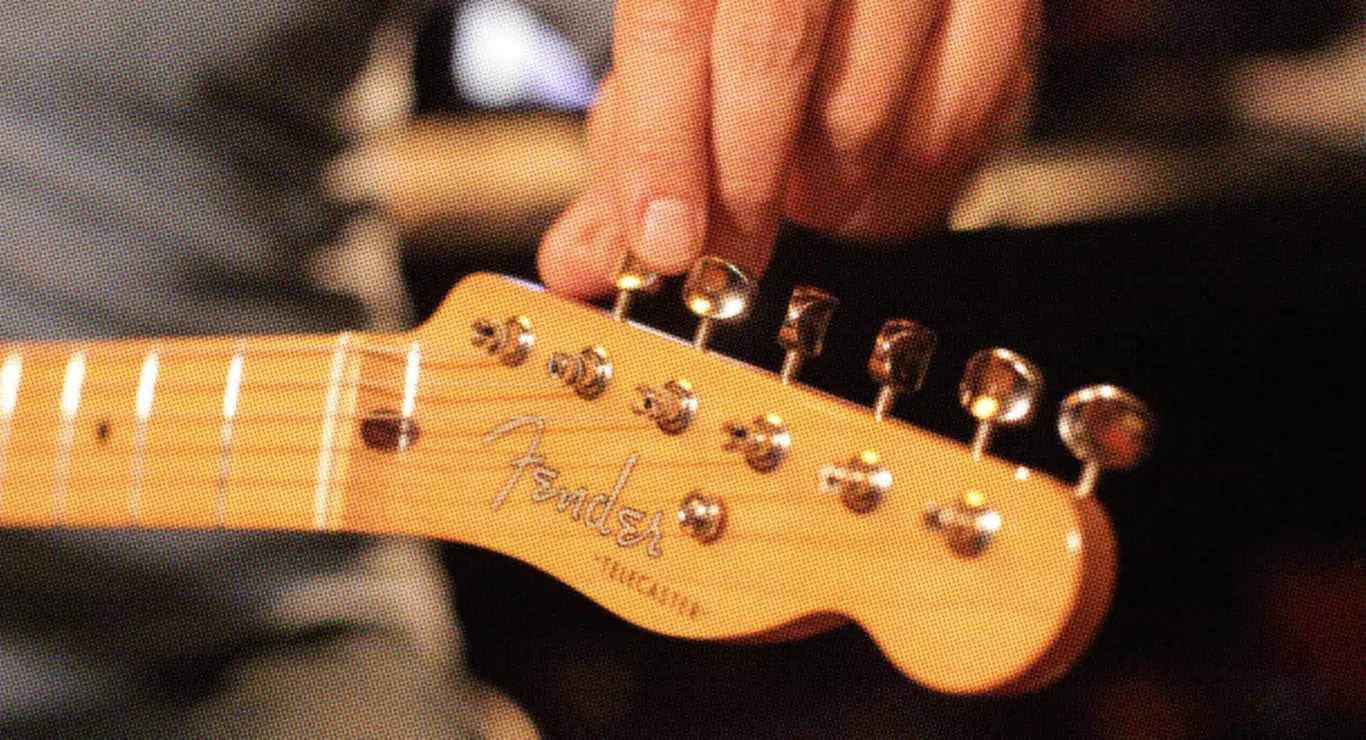
Power chords rely on precise intervals.
An out-of-tune guitar can make even the best-played power chords (fifth chords) sound off.
What is a Power Chord? Final Thoughts
Power chords, in their essence, are a blend of simplicity and depth.
Whether you’re a rock enthusiast strumming away in your garage, or a hip-hop producer looking for that raw edge, when you play power chords, it’s a gateway to a universe of musical possibilities.
By understanding their structure (like a root note), experimenting with variations, and mastering the techniques, you open doors to endless creativity.
The key lies in appreciating their versatility and embracing their power to transform and elevate music across genres.
So, next time you’re asking yourself “what is a power chord?” make sure to refer back to this article for some expert techniques.
Speaking of power chords and their profound impact in music, there’s something you won’t want to miss.
For producers out there looking to elevate their game, we’ve got an incredible treat for you: These Free Guitar Loops.
This legendary pack offers a whopping 7 Free Guitar Loops complemented by 70 Audio & MIDI Stems.
These aren’t your run-of-the-mill loops; they’re high-quality, intricately crafted, and recorded by professional guitar players.
Having such a resource at your fingertips is invaluable.
It’s not just about the chords and the music theory 一 it’s all about the application.
And, with these mind-blowing guitar loops, you’re set to apply your newfound knowledge like a true professional.
So, go on and give your tracks that unique edge with the mesmerizing sounds of real guitars.
Until next time…







Leave a Reply
You must belogged in to post a comment.